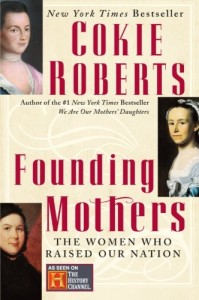This post was originally published as the July 2004 Newsletter.
Happy Independence Day, everyone. It’s the morning of July 4th as I write this. I’ve been listening to the audio book called Founding Mothers by Cokie Roberts.
It tells the stories of many of the women related to or married to the founding fathers of the United States. It’s an uplifting and fascinating book.
Anyone interested in learning how the women of our young country contributed to its beginnings would find the book a good read. I was interested in the part where the colonists boycotted “English Tea”, which was their preferred drink. What kinds of “tea” did they then drink, I wondered? So, after a little research, I came upon some interesting information.
Of course, not everyone in The Colonies could afford to drink the imported English Tea, which was actually imported from either India or China. Some of the native herbs used for tea were bee balm, Monarda didyma, wintergreen, Gaultheria procumbens,a variety of goldenrod, Solidago odorata, New Jersey tea, Ceanothus americanus, and leaves of the raspberry bush. In the southern colonies, sassafrass tea was enjoyed, made from the bark of sassafrass root. This also is the original ingredient in root beer.
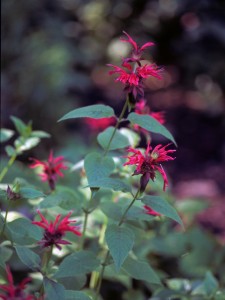
Mondarda didyama, Bee Balm, Oswego Tea
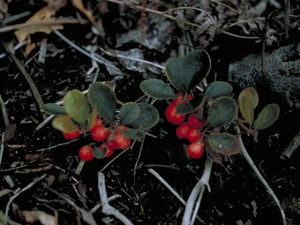
Wintergreen leaves and berries
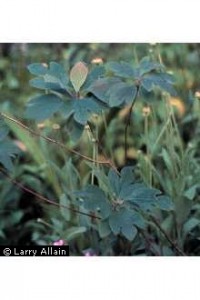
Leaves of the Sassafras Tree
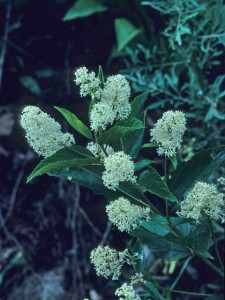
New Jersey Tea,
In the Virginia Gazette, Williamsburg, Virginia, January 13, 1774 is an article signed by one Philo-Aletheias that details the patriotism of the “English Tea” boycott and gives some examples of “Liberty Tea”. The article begins as follows: “Can posterity believe that the constitutional liberties of North America were on the Point of being given up for Tea? Is this exotic Plant necessary to Life? … But if we must through Custom have some warm Tea once or twice a day, why ma be not exchange this slow poison which not only destroys our Constitution but endangers our Liberties and drains our Country of so many thousands of Pounds a Year for Teas of our own American Plants, many of which may be found pleasant to the taste, and very salutary, according to our various constitutions…”
And, Mr./Ms Philo-Aletheias gives 17 examples of substitutions, some of which are: “Sweet marjoram and a little mint; mother of thyme, a little hyssop; sage and balm leaves joined witha little lemon juice, rosemary and lavender, a very few small twigs of White Oak well dried in the Sun with two leaves and a Half of Sweet Myrtle; Clover with a little chamomile; Peppermint and Yarrow; Twigs of liquid Amber Tree (commonly called Sweet Gum) with or without the flowers of Elder…” The list goes on.
Herbs certainly were used for more than tea during the colonial period of our history. A well stocked medicine cabinet would contain portions of dried herbs for poultices or to make a soothing draught for a cold or sore throat.
The kitchen was not neglected, either, when it came to using herbs. Some of the notes on cookery that survive mention sassafrass flavored New Orleans gumbo, rose water added to a wedding cake, and Sally Washington’s chicken dressing had thyme in it. A “smothered veal” dish contained the heady combination of parsley, thyme, carrots, turnips, roast chestnuts, potatoes, onions and celery root. In Louisiana the French flavored their dishes with Bay Leaves , thyme, cloves, garlic, cayenne pepper, mustard, tomato and parsley. In the West, marjoram was a Spanish influence added to cayenne peppers.
Many of the colonists brought over seeds and a few plants from the gardens they left behind. Since regular shipping routes were in place, plants and seeds were soon being sent for. Some newspaper clippings have survived with notices such as this one from the South Carolina Gazette in 1735: “Just imported from London to be sold by John Watson… mustard seed”, and from the same paper, December 28, 1738: “Just imported from London by Doctor Jacob Moon… anis seeds, carraway seeds, sweet fennel seeds.”
So, as you celebrate this Independence Day, think about the people who came to the Americas and made a life here, eventually risking all for freedom from England. And, if you’d like a different take on the history of the Revolution, read “Founding Mothers” and you’ll realize all the people of the colonies played a part in the birth of our nation.
(Much of the information for this newsletter came from a book originally published in 1933, Gardening with Herbs for Flavor and Fragrance, by Helen Morgenthau Fox. It was reprinted in its entirety in 1970, and is sold by Dover Books)
QUOTE FOR THE MONTH
America will never be destroyed from the outside. If we falter, and lose our freedoms, it will be because we destroyed ourselves. -Abraham Lincoln, 16th U.S. President (1809-1865)

